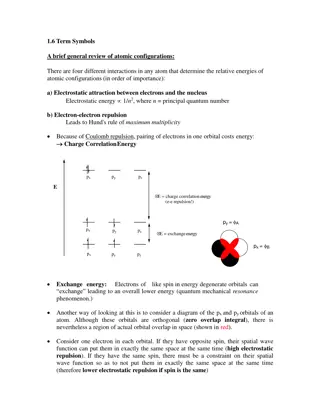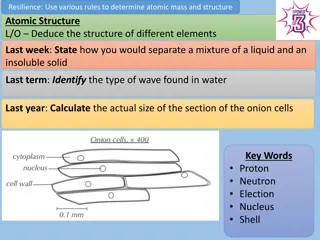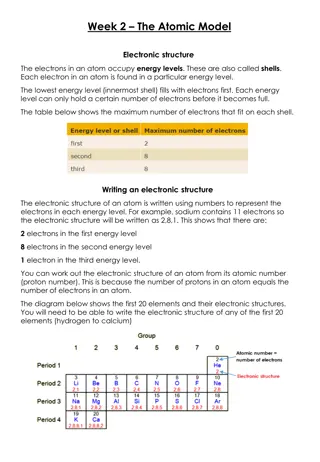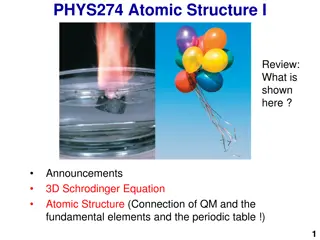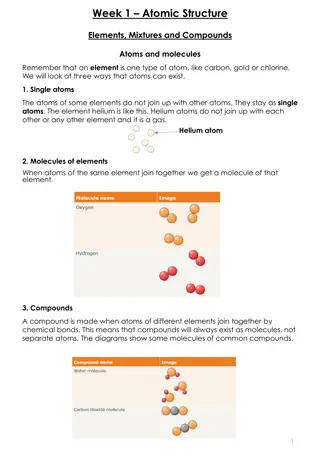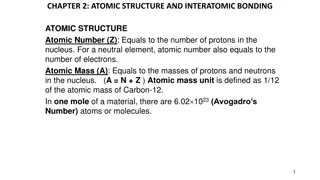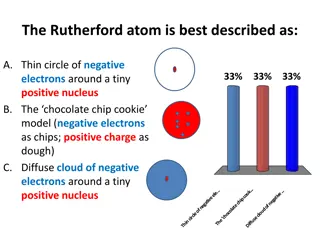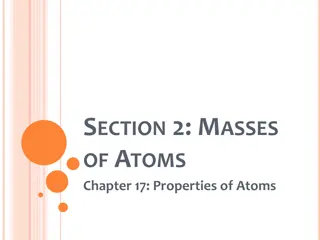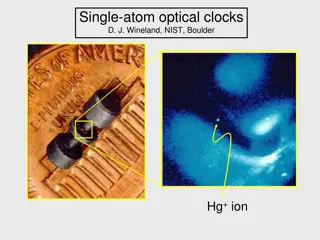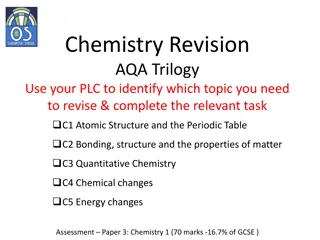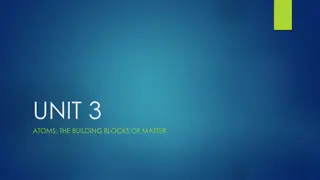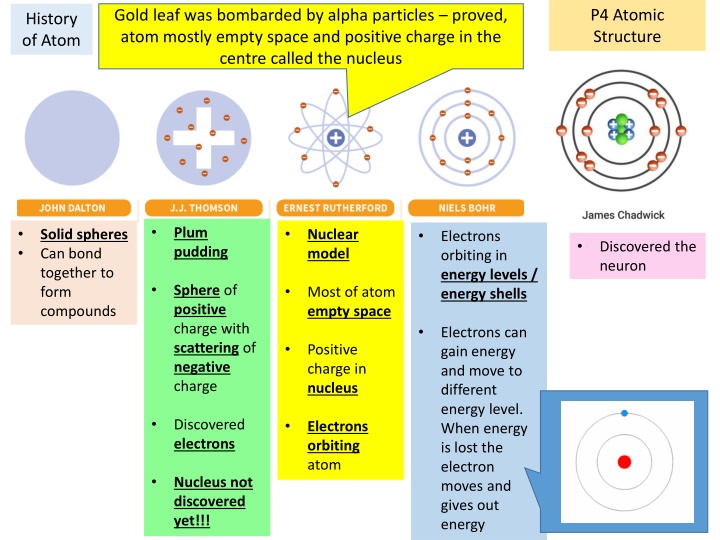
Atomic Structure and Radioactive Decay
Discover the history of the atom, its structure, subatomic particles, isotopes, nuclear decay, and radioactive decay processes including alpha, beta, and gamma decay. Learn about nuclear equations and half-life in this comprehensive guide.
Download Presentation

Please find below an Image/Link to download the presentation.
The content on the website is provided AS IS for your information and personal use only. It may not be sold, licensed, or shared on other websites without obtaining consent from the author. If you encounter any issues during the download, it is possible that the publisher has removed the file from their server.
You are allowed to download the files provided on this website for personal or commercial use, subject to the condition that they are used lawfully. All files are the property of their respective owners.
The content on the website is provided AS IS for your information and personal use only. It may not be sold, licensed, or shared on other websites without obtaining consent from the author.
E N D
Presentation Transcript
P4 Atomic Structure Gold leaf was bombarded by alpha particles proved, atom mostly empty space and positive charge in the centre called the nucleus History of Atom Plum pudding Solid spheres Can bond together to form compounds Nuclear model Electrons orbiting in energy levels / energy shells Discovered the neuron Sphere of positive charge with scattering of negative charge Most of atom empty space Electrons can gain energy and move to different energy level. When energy is lost the electron moves and gives out energy Positive charge in nucleus Discovered electrons Electrons orbiting atom Nucleus not discovered yet!!!
These are the subatomic particles Current atomic model Most of mass in nucleus Atoms have a neutral charge Radius of an atom = 1 x 10-10m Electrons can gain and lose energy Electrons can be transferred forming ions Ar short hand electron configuration 2.8.8 First shell: 2e- 2nd & 3rd shell: 8e- 3 shells 3rd period 8 electrons in outer shell group 0 Relative atomic mass Relative to carbon-12 Average mass These are isotopes Ar = 6.9 = (6.015 x 0.075) + (7.016 x 0.925) Isotopes have the Same atomic number (protons) Different masses (neutrons) The relative atomic mass of these isotopes = 6.9
Nuclear decay Some isotopes are stable proton = neutron Alpha particle released Radium 226 unstable Some isotopes are unstable More neutrons nucleus decays Gives out radiation Radon 222 formed Alpha Beta Gamma What is it Helium nuclei Fast moving electron Electromagnetic wave 2 neutrons 2 protons Mass = 4 No mass Mass = 0 Particle / wave Large particle Small particle wave Ionising very Less than alpha Less than beta penetration poor good Very good What stops it? Air, skin, paper etc Aluminium, tin Lead and concrete
Nuclear equations shows radioactive decay Alpha is released Mass =4 Protons =2 Alpha decay Due to losing mass 4 from alpha Radon must have 222-4 = 218 Ra Radium-222 is unstable Due to losing 2 protons, the atomic number is 88-2=86 No mass is lost hence N has a mass of 14 Due to beta having -1 proton, nitrogen needs to have 1 extra proton to carbon i.e. 7 Beta decay Beta has 0 mass and - 1 proton Carbon-14 unstable Gamma decay Gamma has no mass or protons since it is a wave, so the same atom is released
Radioactive Decay and Half life Detects number of radiation counts per second Radioactive decay Random Releases radiation (alpha, beta or gamma) detected by Geiger-Muller tube and counter Some radioactive isotopes have a short half life (seconds), others have a long half life (millions of years) Half life: time taken for the number of radioactive nuclei in an isotope to half After every half life number drops by half but never reaches zero At 0 hours there was 70,000 radioactive nuclei Draw a line from 35,000 to the curve then down Note it starts at 70,000 not 80,000 After 6 hours (half-life) 35,000 radioactive nuclei (number has halved) Activity (Bq) Half of 70,000 is 35,000 After another 6 hours, 17,500 radioactive nuclei remain This will continue but will never reach zero!!! Half life is 6 days
Irradiation and Contamination Ionising radiation can enter cells Cause cancer An irradiated substance is something that has been exposed to radiation It does not become radioactive!!! or A radioactive substance gives out radiation Cell death Radioactive contamination when unwanted radioactive atoms get onto an object * Use gloves / tongs / masks The man has been contaminated as picked up radioactive atoms on his shoes The woman has been irradiated by the sun s radiation Gamma and beta most dangerous as irradiation source Alpha is the most dangerous if consumed in the body as most ionising!

